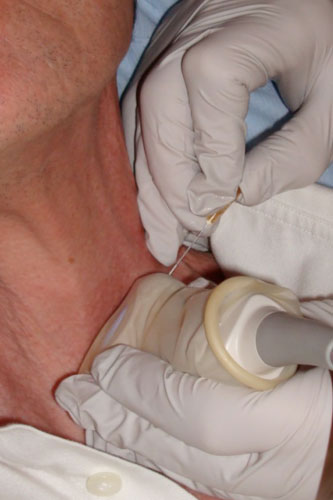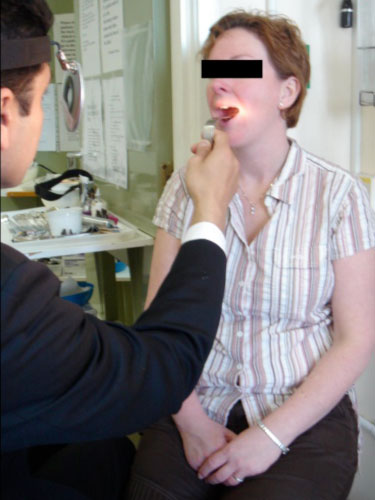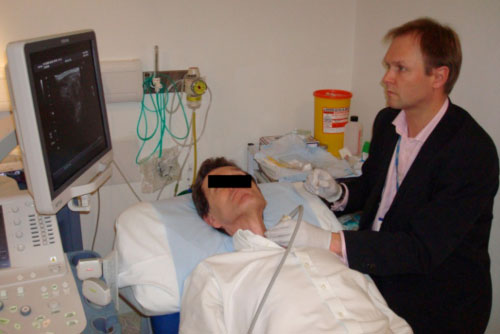Head and neck cancer is normally managed by a team of specialists in order to provide an accurate diagnosis and the most effective treatment. This article will be of help to anyone who has been diagnosed with head and neck cancer and who would like to know what the next stage of assessment and treatment will be.
Contents
- Introduction - Modern Management of Head and Neck Lumps
- The Neck Lump Clinic
- ENT Head and Neck Surgeon
- Neck Lump Ultrasound
- Combining Three Super-Specialist Head and Neck Consultants
Introduction to Rapid Access Neck Lump Assessment
Head and neck cancer affects between 8 and 15 people out of every 100,000 of the UK population, although there are considerable regional variations. There is good evidence that early detection of head and neck cancer improves the chances of surviving this disease, but unfortunately many of the initial symptoms are often very general and not just specific to cancer. One of these symptoms is a neck lump, which can be an extremely common and completely benign (not dangerous) symptom but which can also indicate the presence of head and neck cancer. As a result of this the modern day Rapid Access Neck Lump Clinic has evolved.
Rapid Access Neck Lump Clinic
A Rapid Access Neck Lump Clinic allows the immediate assessment of patients with a neck lump to take place. The benefit of this is that it enables those patients whose neck lump is benign to be reassured whilst also allowing for patients with a malignant lump to be swiftly diagnosed so that the appropriate treatment can be rapidly commenced. In addition to this a person who does have a benign neck lump that nevertheless requires surgical input will be seen and managed by a surgeon who specialises in neck surgery.
I see in excess of 400 patients each year in a Rapid Access Neck Lump Clinic and thankfully, looking at the statistics from this clinic demonstrates that only 9% of these patients have a malignant diagnosis. The patients that do have a malignant lump are rapidly managed with further imaging, biopsy and then the commencement of their definitive cancer treatment. Importantly the 91% who have a benign diagnosis are reassured of this very quickly.
Check directly with Rapid Access Neck Lump Clinic
The Neck Lump Clinic
A Rapid Access Neck Lump Clinic does not just involve surgeons. It is a clinic that requires a team approach.
The Role of the ENT Head and Neck Surgeon
As the ENT / Head and Neck Surgeon I will see the patient first and take a careful clinical history. This guides my thoughts as to what the neck lump might be. Following this I will then examine the patient thoroughly. I look of course at the neck lump but I also carry out a thorough oral examination and I evaluate the nasal space and upper airways and the upper respiratory and digestive tracts using an endoscope (a special viewing instrument), seeking a cause of the neck lump.
Neck Lump Ultrasound
Following my history and examination, an Ultrasound of the neck lump is the bare minimum investigation performed by the second member of the team, the Radiologist. In order to offer a first class service, the radiologist I work with is a specific Head and Neck radiologist rather than a general radiologist.
Combining Three Super-Specialist Head and Neck Consultants
If appropriate, cells from the lump will be taken under ultrasound guidance and they will be examined by a third member of the team, the Cytopathologist. Cytopathologists again are super-specialists in their field and their interpretation of the small sample of cells from a neck lump can be invaluable in the diagnosis.

The combination of three super-specialist consultants (surgeon, radiologist and cytopathologist) in Head and Neck Lumps offers the patient the best and most accurate management of a neck lump.








